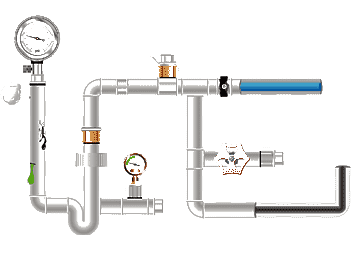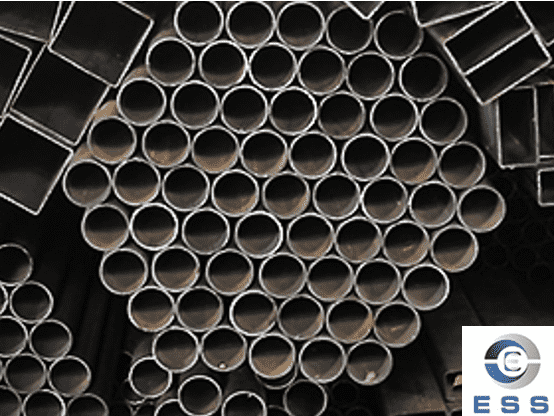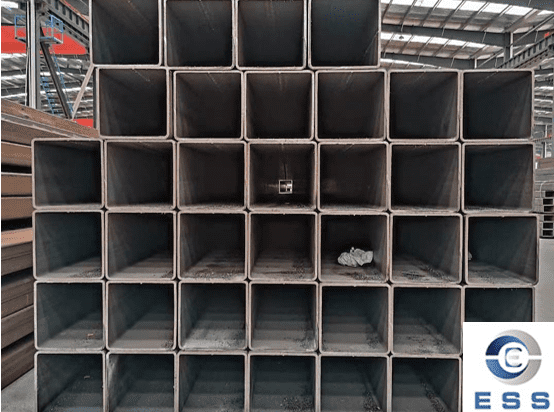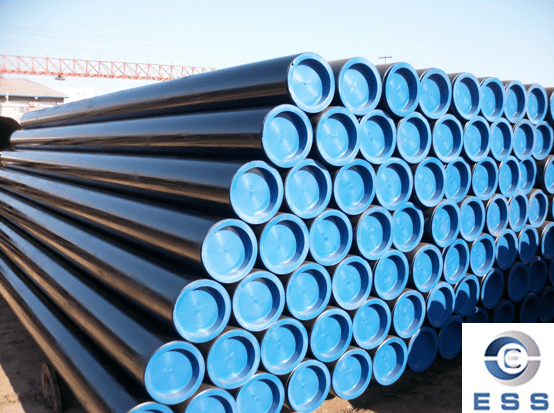Square tubes (SHS
steel) are a common building material widely
used in construction, machinery manufacturing, and other fields. They are
typically made by bending cold-rolled and hot-rolled steel sheets. Their hollow
structure gives them high strength and compressive strength, while also being
lightweight, easy to process, and available in various specifications.
To facilitate engineering design,
procurement, and processing, it is crucial to accurately understand the methods
for calculating square tube dimensions, weight formulas, cross-sectional area
calculations, and standard specifications. This article provides a complete
guide to square tube dimension calculation.
The basic dimensions of a square tube are
typically composed of the following parameters:
1. Outer Side Length (A)
The side length of the square cross-section
of the tube, such as 50 in 50×50mm.
2. Wall Thickness (t)
The wall thickness of the tube, such as t =
2.0 mm.
3. Inner Side Length (B)
B = A − 2t
4. Length (L)
Commonly 6 m, but can also be customized
upon request.
5. Theoretical Weight
Calculated based on cross-sectional area
and density.
Square Tube Size Classification
Square tubes are a common building
material, frequently used in frame structures, supporting structures, and
interior decoration. Based on size, square tubes can be classified into the
following three types:
1. Small-sized square tubes
Width ≤ 20mm,
Height ≤ 40mm, Thickness ≤ 2.0mm.
2. Medium-sized square tubes
Width 20mm~200mm, Height 40mm~400mm,
Thickness 2.0mm~12.0mm.
3. Large-sized square tubes
Width ≥ 200mm,
Height ≥ 400mm, Thickness ≥ 12.0mm.

Formulas for Calculating the Size of
Square Tubes
1. Calculating formula of square tube inner
side length
The formula for calculating the inner side
length B is:
B = A – 2t
Where,
A = Outer side length
t = Wall thickness
Example:
Outer side length 50mm, wall thickness 2mm
B = 50 − 2×2
= 46 mm
2. Square tube length calculating formula
Standard length:
6m (most commonly used)
12m Processing lengths: 3m, 4.5m, 5.8m, 8m,
etc.
Actual project length calculation method:
L1 = L2 − L3
Where,
L1 = Effective length
L2 = Total length
L3 = Cutting allowance
The cutting allowance is usually 2–5mm (depending on the saw blade type).
The wall thickness of a square tube refers
to its physical thickness, usually expressed in millimeters.
Its calculation method is:
Wall thickness = (Outer diameter - Inner
diameter) ÷ 2
Where both the outer and inner diameters
are in millimeters.
For example:
A square tube with an outer diameter of
60mm and an inner diameter of 50mm has a wall thickness of 5mm.
4. Calculating formula of square tubes cross-sectional
area
The cross-sectional area of a square tube
can be calculated using the following formula:
S = A² − (A − 2t)² = (4At − 4t²)
Where,
A = Outer side length
t = Wall thickness
Example:
50×50×2.0 square tube
S = 4×50×2 − 4×2² = 400 − 16 = 384 mm²
5. Square tube perimeter calculating
formula
The outer perimeter P of a square tube can
be calculated using the following formula:
P = 4A
Where,
A = Outer side length
Example:
A = 100 mm
P = 4×100 = 400 mm
6. Square tube weight calculating
formula
The weight of a square tube refers to the
weight of each tube, usually expressed in kilograms.
Theoretical Weight Formula:
W=S×L×ρ
Where,
ρ = Density (generally 7.85×10⁻⁶ kg/mm³ for carbon steel)
L = Length (mm)
General Formula (in meters):
W (kg)=0.0157×(A−t)×t×L
(Commonly used industry empirical formula)
Example:
100×100×4.0, length 6m
W=0.0157×(100−4)×4×6=22.64 kg
Standard Sizes of Square Tubes
In addition to the sizes calculated using
the above formulas, square tubes also have some common standard sizes.
For example, international standards
include 50×25mm, 80×40mm, and
100×50mm, while Chinese standards include 40×30mm, 70×50mm, and 100×80mm.
When selecting square tubes, you can choose
the appropriate size according to your actual needs.
How to Choose the Appropriate Square
Tube Size?
1. Consider the stress conditions of
square tubes
As a structural material, square tubes need
to withstand certain loads during use.
Therefore, when selecting the size of
square tubes, we need to fully consider their stress conditions, including
static loads, dynamic loads, and impact loads.
Generally speaking, larger square tubes
with stronger load-bearing capacity are suitable for applications with larger
loads, while smaller square tubes are more suitable for light loads or
auxiliary support scenarios.
|
Application Scenarios
|
Recommended Square Tube Size
|
|
Furniture, Lightweight Supports
|
20×20、25×25、30×30
|
|
Indoor Frames
|
40×40、50×50
|
|
Steel Structure Purlins
|
80×80、100×100
|
|
Heavy-Duty Structures
|
≥150×150
|
2. Analyze the usage environment and
requirements
The usage environment of square tubes is
also an important factor to consider when selecting sizes.
For example, square tubes used in humid or
corrosive environments should be selected based on materials and sizes with
good rust and corrosion resistance.
Furthermore, for applications requiring
frequent movement or disassembly, smaller, lighter-weight square tubing may be
more suitable due to its portability.
|
Environment
|
Recommendations
|
|
Outdoor, Humid
|
Galvanized square tubing or wall
thickness ≥ 2.5mm
|
|
High Corrosion
|
Stainless steel square tubing (304/316)
|
|
High Temperature
|
High-strength carbon
steel square tube (Q355, Q460)
|
3. Choosing based on cost budget
While meeting usage requirements, we also
need to consider the cost budget when selecting square tubing size.
Generally, larger square tubing uses more
material, resulting in higher costs.
With a limited budget, we can reduce
reliance on larger square tubing by optimizing structural design and selecting
high-strength materials, thereby effectively controlling costs.
FAQ
1. How is the wall thickness of the square
tubing determined?
The wall thickness is determined by the
design load, mechanical requirements, and the usage environment.
Common wall thickness ranges:
Small square tube: 1.0–2.0mm
Medium square tube: 2.0–4.0mm
Large structural square tube: 4.0–12.0mm
2. What are the standard dimensions for
square tubes?
Common standards include:
GB/T 6728 (China)
EN 10219 (European standard)
ASTM A500 (American standard)
The three standards differ slightly in
their dimensional settings.
3. What are the dimensional differences
between SHS
steel and RHS steel?
Square tube (SHS steel): A = A (square
cross-section)
Rectangular tube
(RHS steel): A ≠ B
(rectangular cross-section)
Rectangular tubes exhibit more pronounced
directional bending resistance.
Square tubes have more uniform overall
compressive strength.
Read more: SHS
steel meaning









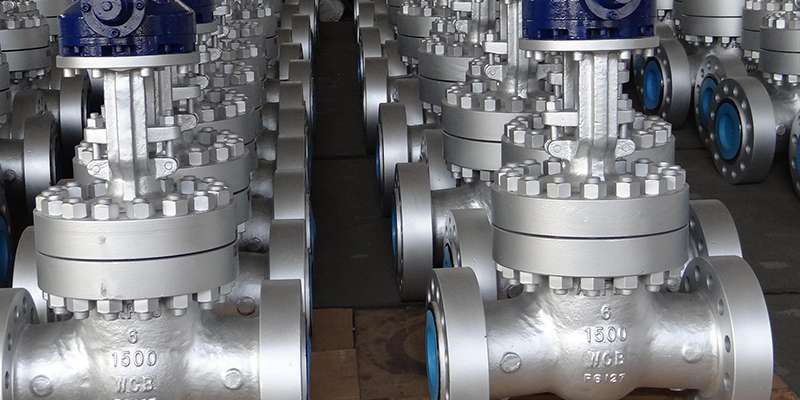



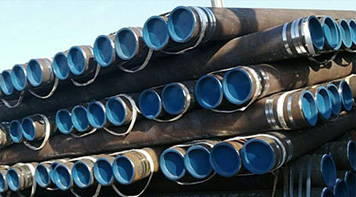 Eastern Steel Manufacturing Co.,Ltd not only improve product production and sales services, but also provide additional value-added services. As long as you need, we can complete your specific needs together.
Eastern Steel Manufacturing Co.,Ltd not only improve product production and sales services, but also provide additional value-added services. As long as you need, we can complete your specific needs together.
